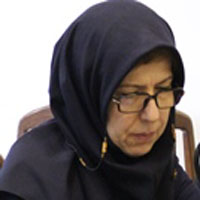From morphemes to words: A comparative approach to study profession names in Persian and French
The current research is based on morphology which is the study of words and how they are formed. Morphology analyzes the internal structure of words and different parts of words; it considers the morphemes as the smallest meaningful units in a language and divides them into two main categories: the first category is called free morphemes which can stand alone like “telephone” and the second one is called bound morphemes which must be attached to another morpheme; like
“-iste” in telephoniste which produce a new word or plural “-s” in “telephones” which produce new forms of the same word.
Many free morphemes can be used as roots in word formation processes and bound morphemes, mostly known as affixes, attached to those roots can make either a different form of that word or new meanings out of the same word. This linguistic process is called affixation. In other words, affixation is a morphological process whereby a bound morpheme, an affix, is attached to a morphological base to form a new lexical unit, and is one of the most common strategies that human languages employ to form new words and word forms.
Whereas we can distinguish many types of this process, the Persian and the French languages generally make use of prefixation and suffixation. The first process is done by the means of prefixes (affixes that precede the word stem) and the second by the means of suffixes (affixes that follow the word stem). It should be also noted that affixes are divided into two main categories; while some of them are labelled as inflectional adding grammatical meanings to the base, a majority of them is known to be derivational used in creating new words.
The inflectional ones will never change the word-class; they have grammatical functions like the plural “–s” suffix in “éditeur-s” which doesn’t produce new word but rather provides the existing lexeme with a new form suitable for performing a syntactic function in the sentence. The derivational ones mark derivational changes. They can change the word-class of the derivatives and they can produce new lexemes, like the job title suffix “–eur” which makes the derived noun “édit-eur” in French from the verb “éditer”.
In this paper, we have aimed to study the derivation of job title nouns via the process of suffixation and to do so we have chosen to study four suffixes (-چی، -گر، -دار، -بان) which are mostly used in Persian to form profession titles. In this regard, we have collected derived words which are formed by these suffixes, considering job titles in Persian and we have tended to examine and compare them - based on their semantic fields- with their relevant equivalents in French.
We began our research with a glimpse of the derivation process as a high-frequency process of vocabulary enrichment, then, we refer to a few fundamental definitions in the domain of morphology that helps clarify the results. We have also conducted an analytic and comparative study of job titles with their equivalents in both languages regarding this process. We also have tended to highlight the existing similarities and differences made by these minimal units of words carrying the specific meanings in examples collected during the research in both languages.
Findings of this research show that each of the four Persian morphemes studied in this article has different types of equivalents in French and this indicates the structural differences and richness of word- formation system of the languages. Each language varies in the ways they express the same meanings; we take the word “مرز-بان” in Persian, as an example, which is the result of derivation but “garde-frontière” as its equivalent in French is a compound word instead. It is also important to note that the words may vary in their formation system in each language like “chercheur” in French which is obviously derived from a verb (chercher+ -eur) while its equivalent in Persian (پژوهش-گر) is derived from an abstract noun. Therefore, each word adopts different
formation process according to morphological structures of that language.
Another key point to be mentioned is that in some cases when the derivatives undergo the same process in both languages and are formed by a stem plus a suffix, the word stem keeps its definition as it is and the suffix gives a new semantic concept to the newly formed word, but the whole meaning is far from the original meaning of the word stem definition. This happens where metaphor and metonymy can affect the meaning of the entire derived words; as an example we can mention the word “سوزن-بان” in Persian and it’s equivalent “aiguille-eur” in French, where the word “سوزن / aiguille” doesn't have its main meaning and is used in a metaphorical way in both languages.
- حق عضویت دریافتی صرف حمایت از نشریات عضو و نگهداری، تکمیل و توسعه مگیران میشود.
- پرداخت حق اشتراک و دانلود مقالات اجازه بازنشر آن در سایر رسانههای چاپی و دیجیتال را به کاربر نمیدهد.



